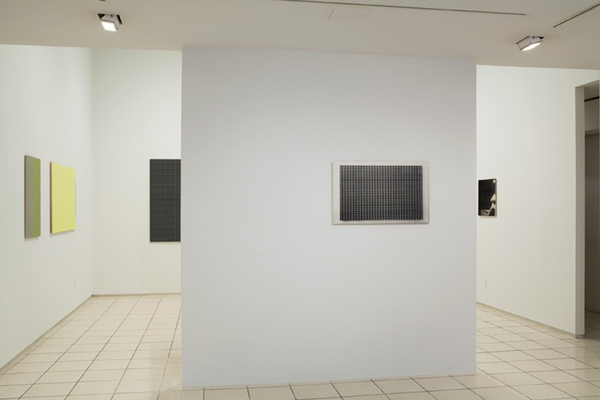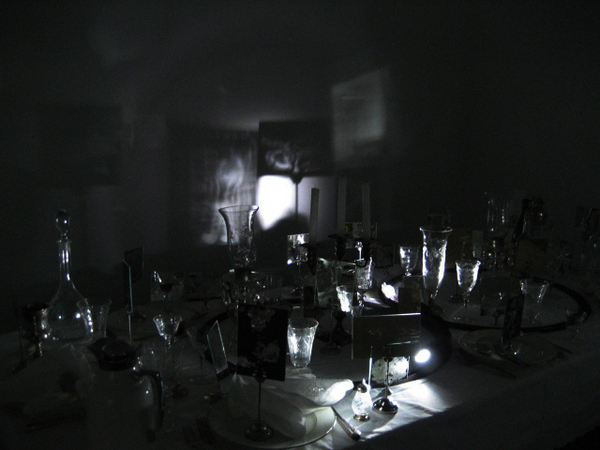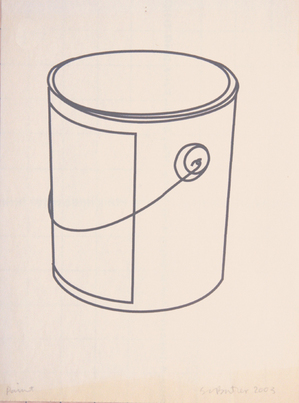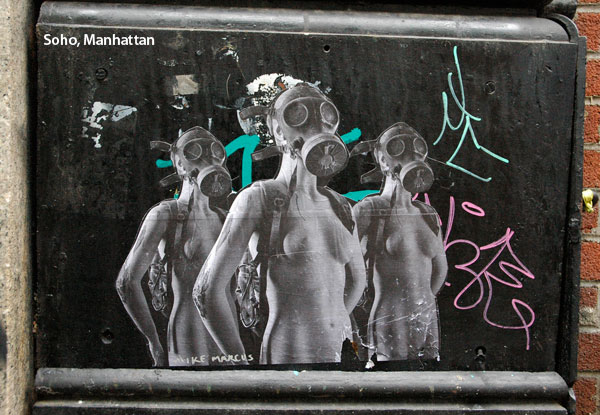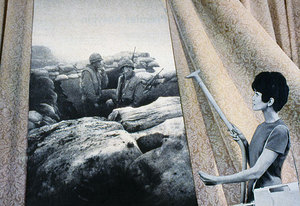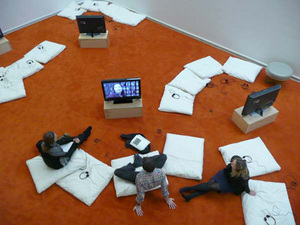This is an archive of the ArtCat Zine, 2007-2009. Please visit our new project, IDIOM.
January 2009

So you might have heard, but Brandeis is closing its Rose Museum, because they are broke. How broke? Broker than was thought, apparently. The reaction has been widespread and swift. ("Philistine in the extreme" wins the epithet-award in connection with all of this.) Tyler Green has good coverage here, here and here. Caroline Stanley points out that if this sudden lack of funds tracks back to Bernie Madoff, as it likely does, Brandeis is to be hurt double as its usual donor base was probably hit just as hard by the same Ponzi. Also something to do with a 'prissy fatwa,' apparently a highly complex legal term. Felix Salmon has more on the numbers here, thanks to AFC for the link. Petition is here, for those of you so inclined. There is a general feeling, it seems, that the Rose is the first domino to fall in what is likely to be a long chain of closings, unless things turn around quickly. Those working in the arts and non-profits more generally often report a one year lag behind the general economy, for good and ill, and we are approaching a very special anniversary.
Susan Buck-Morss: Visual Empire
Thursday, January 29, 2009 - 7pm
SVA - Visual Arts Theater - 333 West 23 Street - Free
The relationship between visual culture, image, and larger patterns of social domination has been at issue for western thinkers for almost half a century. Perhaps an outgrowth of the Situationist leveling of the genre-distinction between commodity and image, perhaps merely a response to an obvious uptick in the televisual organization of the consumer and leisure classes, various scholars have posited connections between power and the visual that range from the merely coincidental to the out-and-out deterministic.
Tonight at SVA Susan Buck-Morss will "will discuss how ideas of empire and sovereignty are reflected in visual imagery." Buck-Morss is one of the world's leading scholars on The Frankfurt School and a professor at Cornell University. Her latest book Hegel, Haiti, and Universal History is a reexamining of Hegel's master-slave dialectic by placing it within the context of the Haitian revolution. The lecture is free.
R. H. Quaytman: Chapter 12: iamb
Miguel Abreu Gallery, Through February 1, 2009
36 Orchard Street
What is so striking about chapter 12: iamb is the conversation between the paintings. I have rarely encountered a dialogue between pieces that is as subtle, as complex and as rewarding as the one at work in this show. This effect is magnified by the austerity of the works considered in isolation from each other, providing a visceral melancholy regarding their (presumably) oncoming separation. It is a remarkably palpable loss. There will, it seems to say, be little left for these paintings without each other.

Naeem Mohaiemen: Young Man Was No Longer A...
Screening and Lecture - Friday, Jan 30, 2009
7:00 PM - New Museum theater
Prohibition is typically considered a failure. The inability to eliminate drinking as a widespread social phenomenon, and the corresponding increase in a general contempt for the law are usually cited as evidence of the temperance movement's misguided idealism. However, when one examines the actual level of alcohol consumption pre- and post- prohibition, one sees that there was a marked decrease, as much as seventy-percent in the first years following the eighteenth amendment. Even after repeal, the populace continued to drink significantly less. Thus a judgement of failure should perhaps be limited simply to the failure of the legislation to persist; and any criticism of the ideal in question should be made imagining a world in which people drink twice as much as they do today.
A similar caution might be employed in considering the revolutionary movements of the 1970's -- examined by Naeem Mohaiemen In his Young Man Was No Longer A... an ongoing work-in-progress that he will present this Friday at the New Museum. What makes these movement's failures for us? What does that label obscure? And what was the world like that gave rise to them in the first place? The presentation will move between personal anecdote and historical commentary. Tickets are available here.
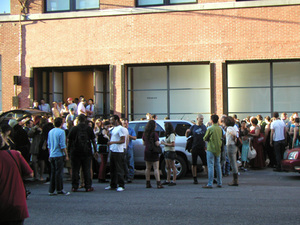
New York Galleries Now - A slide lecture by John Zinsser
Monday January 26, 2009 - 6:30 p.m.- 6th floor
The New York Public Library- 40th Street and 5th Avenue
Free
Tonight at the New York Public Library, twenty-year veteran of the New York art scene John Zinsser will present a slide lecture entitle “New York Galleries Now.” An avid partisan of the gallery experience, Zinsser will cover not only major shows from the 2008 season, but will also discuss the ways in which different neighborhoods continue to impact art viewing. “Simply the experience of having to go to a specific location or address to see a show changes how we approach the work,” Zinsser said when reached by phone, “actively seeking out a space in the Lower East Side or Uptown is in stark contrast to the homogeneous Chelsea conveyor belt.” Zinsser, in addition to being an abstract painter, also teaches a class, ‘The Art of Viewing Art,’ at the New School, and hopes to use tonight’s talk to consider the effect of the economic crisis on the gallery scene. “There is, at present, a tremendously expanded art audience due to the wild proliferation of galleries and art fairs over the last ten years,” Zinsser said, “and one of the questions I hope to explore tonight is not only where have we been, but where we are going in light of this widespread structural readjustment. Can Chelsea go on as it has been?”
“I continue to find the dynamic of the gallery show -- the combination of the artist’s goals and the gallery’s goals – to be endlessly fascinating,” Zinsser continued, “it really is the context that determines meaning.” As part of his presentation Zinsser will show slides of photographs he has taken at various galleries over the previous year, emphasizing how each major neighborhood navigates its own unique set of issues regarding the presentation of art. The talk begins at 6:30 and is free.
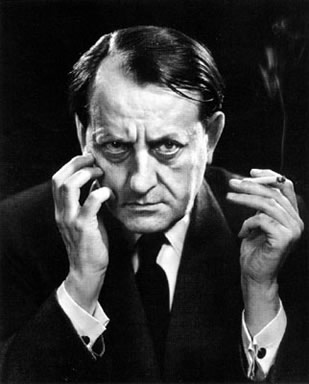
So it began with this, a request for a Cabinet level cultural post of our very own. Quincy Jones, for his part, has apparently been on this tip for a while. And you might have seen this, a not particularly elegant, but supportive, petition floating round the ethernets all week. A look at the history of Big Brother's artistic subsidy action can be found here, where the author argues, not without cogency, to improve the institutions in place rather than creating new ones. From 2007, a brief rundown of the typical duties of cultural ministers also includes a cool picture of Andre Malraux, the OG culture minister, who served under De Gaulle. Obama's pre-election arts platform can be found here, and some celebrity's gush over his general affection for the arts on the mayor's website. A more recent report seems to indicate that, like everything else good in the world, arts and any new Tsars will have to be curtailed due to the economy. This short and somewhat scattershot post indicates the existence of confused scientists who were hoping the new cultural Tsar would protect them from activist school boards. NPR weighs in here.
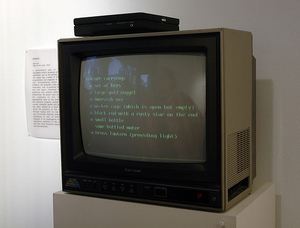
Several events come recommended tonight in Manhattan. On the earlier side of things, one of the more unique voices of American intellectual life, the poet and critic Wayne Koestenbaum, speaks at NYU tonight at 5pm, on a topic yet unknown by your commentator. Rirkrit Tiravanija opens a solo exhibition at Gramercy Park's NYEHAUS gallery, for which a bombastic press release promises a reflective ping pong table and puppet versions of the artist, as well as friends Phillipe Parreno, Pierre Huyghe, Liam Gillick and Hans Ulrich Obrist. Also opening tonight is Seth Price at Reena Spaulings. The artist returns with his first New York solo exhibition since the show at Friedrich Petzel last spring, and several major exhibitions across Europe since. For the opening tonight, a takeaway compact disc and some kind of text are promised to visitors. Finally, also recommended tonight is the School of Visual Arts' MFA thesis exhibition Heterotopia, curated this year by Why + Wherefore -- the online curatorial collective comprised of Nicholas Weist, Summer Guthry and Lumi Tan.
If readers would prefer to spend the evening sitting in the dark rather than subjecting themselves to well-lit white interiors, Anthology Film Archives will be showing two of Carolee Schneeman's better known film works, Fuses and Kitch's Last Meal; the former a 16mm avant-garde sex adventure, the latter an ode to the artist's cat.
Post Parting Party
Dexter Sinister
38 Ludlow St New York NY
7pm
This friday Dexter Sinister will be hosting POST PARTING PARTY at their Just-In-Time Workshop and Occasional Bookstore. The event will a performance of sorts by Coiffeur's Stephane Rebillard -- the stylist will be offering free haircuts a "True Mirror," inverting regular hairstyles "in line with the Hair Part Theory." The design bunker will also be stocking its shelves with the latest edition of their cultural journal dot dot dot.
The Shadows Cast by Ordinary Objects
Hanna von Goeler
Sloan Fine Art - 128 Rivington Street, New York NY
7 January – 7 February 2009
In Hanna von Goeler’s multimedia installation The Shadows Cast By Ordinary Objects, the spectator is invited to the aftermath of a formal meal, complete with strewn silverware and crumpled cloth napkins. Immediate references are made to the medium of film as a toy train weaves a figure “8” amidst the table setting, projecting light and illuminating delicately rendered images etched into tiny mirrors amidst the table's clutter. The blending of the projected images’ meanwhile is created by cast shadows from the toy train, simultaneously linking notions of past, present and future. The work is not a film; it reads instead as a still life that inscribes its own silent, internal motion, conflating the two genres.
Von Goeler’s reflective tableau makes subtle inferences, particularly evident in the miniature etchings and the moving train, to WWII Germany and the holocaust, as well as to Goebbel’s Chamber of Film and National Socialism’s propaganda apparatus. The diverse renderings are comprised of images of skulls, warplanes, concentration camps, German storybook illustrations and other motifs relating to both the nation’s past and present. The meal serves as a meeting place – where we bring our personal and domestic histories to the table. The aspect of relation is emphasized in this environment through images that indirectly project and then bounce off other adjacent images, augmenting their interaction.
There is a combined pleasure and frustration in watching the installation project images for short periods of time – one receives a textured picture, a blur. The heirloom glassware heightens these cast illusions by distorting light to a quasi-fluid state. Light begins to function like a wet brushstroke activating a relationship between the mirrored imagery and the various mediating surfaces on which they land, thereby seeming to transport the still life into a state of animation. The formal aspect of the light has an ethereal, smoky quality to it and allows an element of abstraction to also float elegantly in and out of the space. In contrast, we receive relief from the frustration of the elusive image by being able to fully enjoy the materiality of the small, detailed etchings on the table at our leisure. The crisp clarity in both form and line in these mirrors provides a strong juxtaposition to what the viewer can otherwise not see so clearly. At this last moment of reflection, having digested the work in its entirety, one is able to step away from the table.

Artfagcity celebrates an altogether worthy and encouraging fundraising success with a wickedly satisfying worst-of the-web 2008. Elsewhere, Saint Slavoj takes a break from his ongoing experiment in theoretical collage to respond to some particularly ridiculous slander from The New Republic, which is drifting farther and farther to the right. When you're linking to this, maybe its time to just come clean and stop wasting everybody's time, eh Franklin? S'all right, their circulation might just be the only thing sinking faster than the stock market. Meanwhile, across the pond, some fictional artists got together and offended everybody, for old time's sake. Daniel Birnbaum continues to meet with widespread professional frustration, venturing this year at directing some minor art fair and interviewing some marginal philosopher; "Everything shall be incorporated into the great digestive system—nothing is inedible in Hegel's infinite metabolism." Triple Canopy may have pioneered the first truly satisfying web/magazine hybrid, and continue to use it to good effect, as evidenced by this. On a more somber note, Martin Puchner pens an excellent piece on the passing of Harold Pinter; "He was a Beckett for actors." Indeed he was. Pause.
Paul Chan and FRONT
1pm Saturday 17 January 2009
Winkelman Gallery - 637 W. 27 St, New York NY
Sunday Salon
Sharon Butler
4pm Sunday 18 January 2009
Pocket Utopia - 1037 Flushing Avenue, Brooklyn NY
Two event recommendations for this weekend follow. This Saturday at Winkelman Gallery, artist Paul Chan will be joined by member's of FRONT, an artist-run group working to foster and sustain the development of contemporary art in the city of New Orleans. They will here talk about their own work in New Orleans, and the impetus for collectivizing in such an environment. Recommended on following day, Sunday 18 January, is Sharon Butler's Salon on "art-making, art-blogging and world making" at Bushwick's Pocket Utopia.
Last fall, I encountered odd black and white images of nude women donning gas masks around the Flickrstreams of my New York contacts and shortly thereafter started spotting them on the streets of lower Manhattan and northern Brooklyn. They seemed out of place in that they were absurd and seemed to have appeared on the streets of the city overnight.
I finally spotted the artist's name on the bottom of one piece in Bushwick written as Mike Marus, which I later discovered was actually Mike Marcus. The alienated figures are powerful and poignant and from someone who obviously had something to say, though at first I wasn't sure exactly what.
After a little digging I discovered that Marcus is a Brit of Jewish heritage who moved to Israel in 2000 and has since moved back to London. His confrontation with the realities of the Second Intifada and Israeli rights abuses against Palestinians galvanized his art. Filled with anger, he took his message to the street and started producing public unsanctioned work. His early work first focused on posting images of West Bank violence on the streets of Israel and then he shifted gears and began to incorporate more penetrating attacks at the essence of Zionism, namely, the purity of the Jewish people and the sanctity of Israel as an idea.
The Rebranding Israel project doesn't pull any punches and its brash imagery portrays a side of Israel many Zionists refuse to see. Marcus has also created a series of art works where he gassed himself with CS gas (tear gas) and photographed the results. As the artist points out on his blog the meaning of his self-gassing was related to his history as a Jew and the current ironies of the Palestinian/Israeli conflict (emphasis mine):
CS is the most common form of tear gas. Its use by military forces is forbidden under the Geneva Convention and the Chemical Weapons Convention of 1997. However during the first year of the Al-Aqsa intifada alone the Israeli Defense Forces used 120,000 tear gas grenades against Palestinians as a form of racially motivated collective punishment.Although the Jews own encounter with the gas chambers makes the use of chemical warfare notable for its irony, it is only one example of the many human rights abuses exercised by Israel during its 41 years of military occupation.
To encourage awareness of the continuing violations enacted by my people against a weak and vulnerable minority and to register my protest, as an ethnic Jew against the injustices carried out in my name, I exposed myself to CS gas and photographed the results.
I had no other way to cry.
Marcus seeks to burst the "bubble" that engulfs life in the great Jewish state and his recent street work continues the trend of pushing that envelope. Within this context we see the cloud of dread that hangs above his gas mask donning mannequins, seemingly caught unawares at the start of an apocalyptic new season. She looks like she we just stepped out of the Garden of Eden and she stands silently watching us eat an apple laced with some hazardous material.
About the mannequins, Marcus has this to say (via his blog):
She is all of us:Dirty and fatigued by a world which expects too much and doesn't give enough in return. Guilty because in a dark place she keeps the knowledge that society is no more than a collection of of her. There is nobody else to blame so in silence she stands and watches.
Hiding behind a mask of her own making she protects herself from what?
...
She fears this week's new collective anxiety. Islam? Terror? Dark skin? She can't remember the difference anymore.
Her bag is packed, back is covered but in the end she stands nude and accountable in a crumbling city.
Marcus describes this female figure as a metaphor for some sort of traumatized collective consciousness. There is an air of science fiction to his work, as if he is projecting his imagery into a bizarre future. Elsewhere on his blog meanwhile he makes a provocative statement about his work based on Israeli issues:
Its easy to provoke a reaction in Israel. All you need to do is tell the truth and watch everyone flip out.
Intrigued by his aggressive imagery, I spoke to Marcus online in an effort to understand his work.
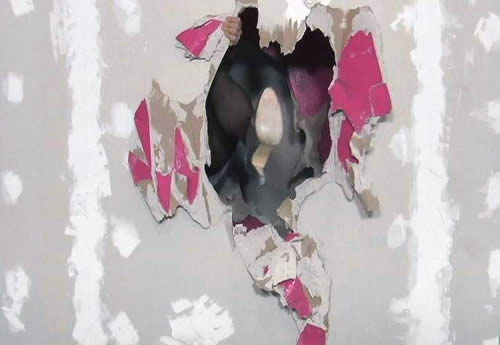
Kate Gilmore
Smith-Stewart - 53 Stanton, New York NY
21 November 2008 - 18 January 2009
Kate Gilmore is a home wrecker. In the four videos on display at her Smith-Stewart debut, she kicks through layers of drywall and attacks furniture and construction materials with a sledgehammer, all while wearing high heels and dresses. As part of the exhibition, Gilmore taped herself at the front of gallery powering through two layers of drywall strewn with hot pink paper. The result of her assault in black heels and a double-breasted dress is a video called Walk This Way, which plays in a claustrophobic space directly to the side of her performance's dusty remnants. We hear the polyphonic sounds of destruction from the other videos simultaneously playing. Between a Hard Place features Gilmore in yellow spike heels, a black dress, stockings and short black gloves, again clawing through layers of gray drywall, this time coordinated with a sheet of yellow wallpaper at the journey's end. The scene recalls Charlotte Perkins Gilman's 19th century short story, The Yellow Wallpaper, about a female protagonist who is diagnosed with a "slight hysterical tendency." As treatment she is confined to her bedroom by her physician husband, where she obsesses over the patterns of the wallpaper and slowly descends into madness. In contrast, Gilmore seems relieved when she takes off her gloves and faces the camera upon reaching the end.
The joy of Gilmore's project is its lack of resolution: is there truly a breakthrough if she set the scene? The other two works continue to question her resolve, both in terms of practical objectives and physical well-being. Across from Between a Hard Place is Down the House, an aerial view of the artist standing on top of a pile of office furniture and plaster blocks splashed in red wet paint. In matching red slip-on sneakers, yellow dress and pink hair ribbon, she wields a sledgehammer to destroy the heap below her, constantly adjusting her balance. As the blocks topple over and the screen fades to black, we still hear her pound the plaster. Higher Horse again finds Gilmore considering ideas of balance and structure when she places herself atop a mountain of cement blocks that two men attempt to dismantle with mallets. We see her build herself a platform to stand upon, only to fall down and climb back up. Her pink tee shirt matches the pink wall covered with veiny, red streaks. Somewhere along the way, she loses a heel.
Gilmore's endurance -- as a sculptor, stylist, and performer -- pays homage to the studio performance tapes of artists like Vito Acconci and Marina Abramovic who, in the early1970s, made work investigating physical limits. Her explicitly gendered characters also echo the feminist narrative of the same era. Whereas Martha Rosler violently demonstrated kitchen utensils in Semiotics of the Kitchen, Gilmore practically swung a wrecking ball through the home. That spiked heel may be more dangerous than you think. Yet for all the theatricality, the artist betrays her background in sculpture with each performance. Her videos are single-take and unrehearsed. The sound of her grunts and breath is real. It's a needed counterpoint to all the artifice. Given the tremendous constraints under which New Yorkers live -- our tiny, overpriced studios, curious roommates, and so on -- an expansion of living space is wish fulfillment. If it takes a little hysteria or high heels, so be it, if it gets the job done.
Visual AIDS Benefit Preview Party
6-8pm Friday 9 January 2009
Metro Pictures - 519 West 24th Street, New York NY
$75
Visual AIDS Benefit Sale
12-6 Saturday 10 January 2009
Metro Pictures - 519 West 24th Street, New York NY
Free
This Friday from 6-8 PM, Visual AIDS, an organization working to increase and support dialog between AIDS research and activism and the visual arts, is hosting a preview party for its annual Benefit Sale at Metro Pictures. Aside from giving visitors a chance to see the 1,600 original postcard sized-works going on sale the following night, the hosts on Friday will also raffle off a chance to select and keep any one of the postcards on view, as well as offer viewers access to a separate silent art auction, as well as a handful of parallel benefit sales. As for the sale on Saturday, Visual AIDS has again assembled a monumental list on artist contributors, and is offering the small works for $75 each (with a work free to those who purchase four).
Some of the artists who have donated work include: Vito Acconci, Ida Applebroog, David Armstrong, John Baldessari, Barton Lidice Benes, Nayland Blake, Ross Bleckner, Patty Chang, Marcel Dzama, Tony Feher, Adam Fuss, Ann Hamilton, Jane Hammond, Mary Heilmann, Arturo Herrera, Alfredo Jaar, Emily Jacir, John Kelly, Jeff Koons, Louise Lawler, Glenn Ligon, Kalup Linzy, Robert Longo, Yuri Masnyi, McDermott & McGough, Barry McGee, Julie Mehretu, Marilyn Minter, Slava Mogutin, Yoko Ono, Catherine Opie, Paul Pfeiffer, Jack Pierson, Paul Mpagi Sepuya, Joel Shapiro, Kate Shepherd, Cindy Sherman, Kiki Smith, Annie Sprinkle, Rirkrit Tiravanija, Kara Walker, John Waters, Carrie Mae Weems, William Wegman, Lawrence Weiner, T.J. Wilcox, Fred Wilson and more.
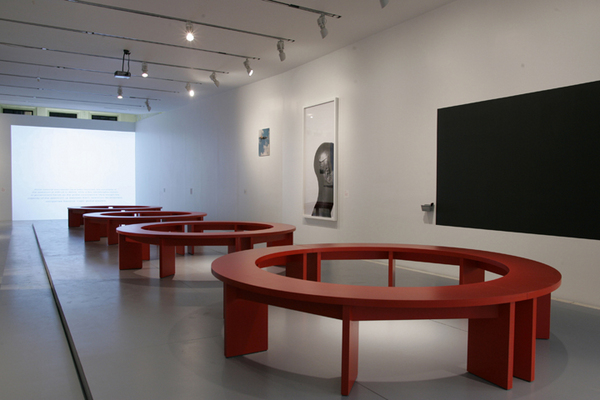
OURS: Democracy in the Age of Branding
Sheila C. Johnson Design Center - Parsons
66 Fifth Avenue at 13th Street, New York
Through February 1
I'm not convinced that OURS: Democracy in the Age of Branding actually goes very far in exploring the relationship it sets out to. Which is a shame because that questioning -- the extent to which democracy has or has not ceased to be a determinant political reality by virtue of a sort of large scale semiotic reorganization privileging the brand as such -- is a very compelling and urgent one. And if this is a decidedly disappointing aspect of OURS..., it is perhaps the only one. Indeed, it seems best to read the curatorial architecture of this show, title included, as merely another fascinating take on the material at hand in what is an excellent, even delightful presentation full of them.
I don't mean to suggest that there is no overriding political theme here, there is, and its easily the most satisfying interrogation of democracy I've encountered in the gallery space. It's just that pulling apart aspects of democracy doesn't necessarily become as investigation of the thing as a brand. It stays, quite simply, an investigation of democracy -- certainly not an uninteresting project, especially when it is done with verve and with such obvious joy. The space is so active and stimulating, it feels as though everybody’s favorite activist artists took over the science museum.
Maybe the best way of describing OURS... is that it is the sort of space in which the Liam Gillick at its center (several large circular structures geared toward, while also troubling, participation) not only seems to make materialist sense, but actually seems at home. It is as though we are finally relieved of having to imagine what Gillick is summoning with his softly optimistic hard candy design; here its just smeared all over the everything, and it turns out its as good as he always told us it would be.
Theater of War
Various showtimes
Through today, Tuesday 6 January 2009
Film Forum - 209 W Houston St, New York NY
95:00
Today marks the last chance for New Yorkers to see John Walter's well received documentary film essay, Theater of War, just finishing its premier two-week run at Film Forum. The work is a contemporary and moving search for the historical figure of Bertolt Brecht by way of a recent staging of one of his better known plays. It attempts, in its multiple and parallel approaches, to get at both the artist and the committed political subject behind the work -- the lifelong leftist whose legacy has been installed at the center of so many conversations on the necessity, efficacy and futility of politics in art. Helping Walter get there is Meryl Streep rehearsing for the Public Theater's 2006 production of Mother Courage, Tony Kushner riding his bicycle, Jay Cantor talking remedial Marx for Americans and a cast of associated persons involved in the production. Woven delicately throughout all this is thoughtful narrative looking in one glance back at the century which was Brecht's, and, in another, to the more local reality of life in Bush's America. For more information please see Manohla Dargis' NYT review, or the film's trailer, available on Film Forum's website.
24 Hours on the Concept of Time
6pm Tuesday 6 January - 6pm Wednesday 7 January
Guggenheim Museum - 1071 Fifth Avenue, New York NY
Second only to the importance of space at the Guggenheim's soon to be closed anyspacewhatever exhibition -- the lyricism of which is most visibly underscored by the empty recesses punctuating the rotunda galleries throughout the museum -- is the issue of time. Certain works there installed seem to cordially invite a lingering of indeterminate tenure for visitors to partake in, and to do so, perhaps most importantly, on their own terms. Rirkrit Tiravanija and Douglas Gordon's Cinema Liberté presents an epic program of previously banned films to be comfortably watched on beanbag cushions, while Tiravanija's coffee bar and Chew The Fat viewing stations likewise encourage a contemplative and unhurried spectatorship. Liam Gillick's Audioguide Bench reassigns sectors of the museum space, otherwise policed by the immanent logic of visitor fatigue, from passageways to rest or lounge spaces -- the primary differences between the two being, of course, precisely just how one spends her time in each. Carsten Höller, similarly, contributes a kind of plein-air hotel room on slowly rotating glass discs for patrons, who could purchase a single night occupancy if inclined -- or, in other words, buy time in the museum when others cannot.
Tomorrow night the Guggenheim presents 24-Hours on the Concept of Time, a final free event organized by the curator Nancy Spector in collaboration with Serptentine Gallery director, Hans Ulrich Obrist. The event, true to its title, will present an opporunity for intrepid visitors to spend an entire day in the museum and witness a densely packed program of interviews, lectures, discussions, and performances by a wide cast of characters with varying degrees of proximity to the ten artists included in the exhibition.
ZINE
HOME
TIPS / COMMENTS
CATEGORIES
CONTRIBUTORS
- Greg Afinogenov
- B. Blagojevic
- Adda Birnir
- Susannah Edelbaum
- Julie Fishkin
- Paddy Johnson
- Jessica Loudis
- Christopher Reiger
- Andrew Robinson
- Peter J. Russo
- Blythe Sheldon
- S.C.Squibb
- Hrag Vartanian


